That Useful Wine Site
Search, or just roll your cursor over the colored boxes farther below.click the “x” to dismiss Search-results block.
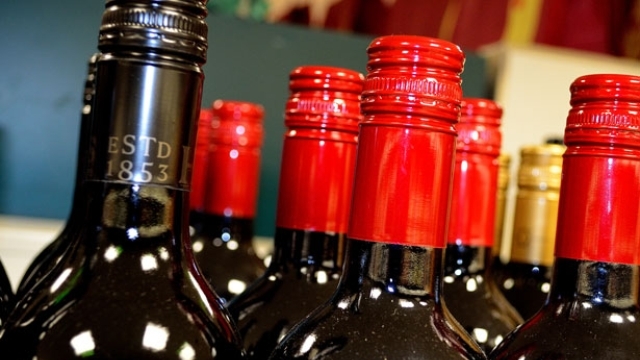
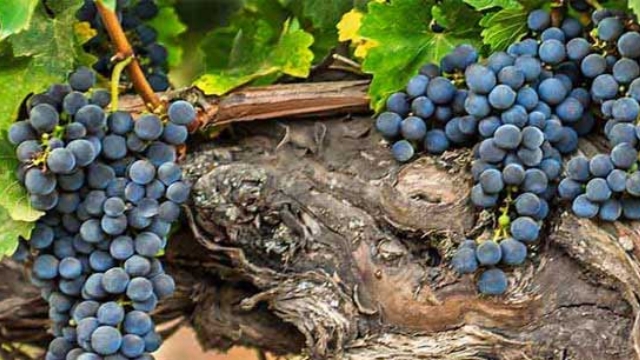
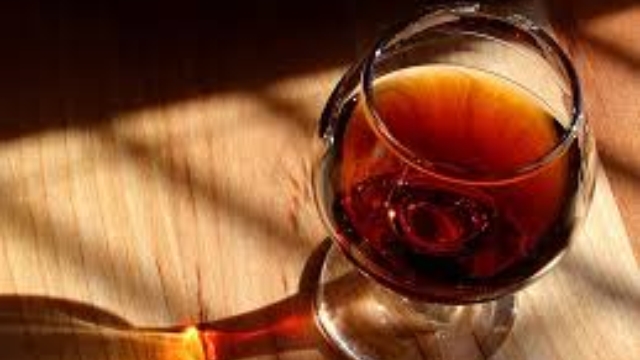
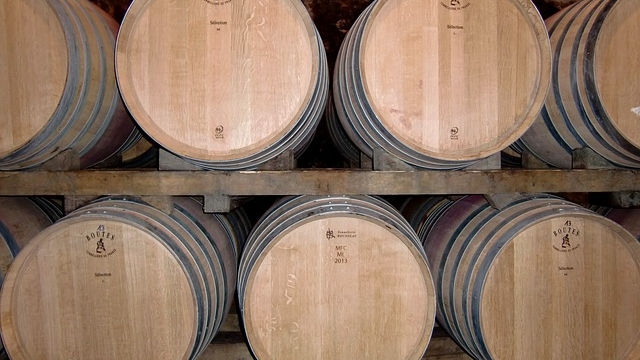
Advertisement:
Advertisement:
Quick page jumps:
(Synonyms: Barbin, Bergeron, Fromental, Fromenteau, Martin Cot, Petite Rousette, Roussanne Blanc)
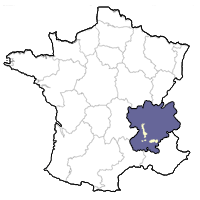
Roussanne is a white-wine grape originating in the Rhône Valley of France. It is generally considered one of the dozen and a half or so of world-class white-wine grapes. It is not commonly bottled as a monovarietal; rather, as is usual practice in the Old World, it is used in named regional blends, typically with Marsenne but also sometimes with Viognier. it is an important contributor to world-famed whites, such as those of Châteauneuf-du-Pape, and is often the dominant wine in the blend (even up to being all in some places in some years). In blends, it is said to add aromatics, elegance and acidity—the acidity lending such blends the capability to improve with substantial bottle age.
Besides the Rhône, Roussanne is planted in meaningful amounts in Australia, California, and Washington State (it is also grown in Italy, but is a lesser grape there), and is beginning to take hold in Texas as well.
The quality of Roussanne wines in youth is intense aromas, typically of a floral character, but also of fruit and herbs. As the wine ages, an overtone of nuttiness appears (not an uncommon procession for ageworthy white wines).
Factoid: Roussanne is one of those wines that are widely believed to experience a “dumb period” in its bottle development: a stage wherin it is “closed” and unyielding. That stage, for Roussanne, seems to lie between 3 or 4 years of age on to 7 or 8 years of age. (Drink early, or wait a good while.)
Monovarietal bottlings are somewhat scarce in the U.S. We have listed what we could find within our price/quality parameters, but be aware that a few of them may be a bit scarce.
• This wine’s Wine Searcher “Reviews” page.
• This wine’s CellarTracker review pages.
• Retail offers of this wine listed by Wine Searcher.
• Retail offers of this wine listed by 1000 Corks.
• This wine’s Wine Searcher “Reviews” page.
• This wine’s CellarTracker review pages.
• Retail offers of this wine listed by Wine Searcher.
• Retail offers of this wine listed by 1000 Corks.
• This wine’s Wine Searcher “Reviews” page.
• This wine’s CellarTracker review pages.
• Retail offers of this wine listed by Wine Searcher.
• Retail offers of this wine listed by 1000 Corks.
• This wine’s Wine Searcher “Reviews” page.
• This wine’s CellarTracker review pages.
• Retail offers of this wine listed by Wine Searcher.
• Retail offers of this wine listed by 1000 Corks.
• This wine’s Wine Searcher “Reviews” page.
• This wine’s CellarTracker review pages.
• Retail offers of this wine listed by Wine Searcher.
• Retail offers of this wine listed by 1000 Corks.
We found no Roussanne wines better enough than those listed above to be worth a “splurge” price.
Advertisement:
Advertisement:
|
|
This site is one of The Owlcroft Company family of web sites. Please click on the link (or the owl) to see a menu of our other diverse user-friendly, helpful sites. |
|
| (Note: All Owlcroft systems run on Ubuntu Linux and we heartily recommend it to everyone—click on the link for more information). | ||
|
All content copyright © 2024 The Owlcroft Company
(excepting quoted material, which is believed to be Fair Use). |
This web page is strictly compliant with the W3C (World Wide Web Consortium) Extensible HyperText Markup Language (XHTML) Protocol v1.0 (Transitional) and the W3C Cascading Style Sheets (CSS) Protocol v3 — because we care about interoperability. Click on the logos below to test us!
This page was last modified on Saturday, 30 October 2021, at 11:26 pm Pacific Time.
Some Descriptions of Roussanne Wines
“Wines made from Roussanne are characterized by their intense aromatics which can include notes of herbal tea. In its youth it shows more floral, herbal and fruit notes, such as pear, which become more nutty as the wine ages. Roussanne from the Savoy region is marked by pepper and herbal notes.”
“In contrast to the challenge it presents in the vineyard, Roussanne is flexible and forgiving in the cellar. It can be successfully fermented in large or small oak, or in stainless steel. It can be harvested at hower sugars but still have good body, or can be left to greater ripeness without losing all its acidity. It has the body to take to new oak, or stainless steel can emphasize its minerality. And unlike most white wines, Roussanne ages very well due to its unusual combination of richness, minerality, and balancing acids; many Roussanne wines can be enjoyed up to 15 years or more after bottling…Wines made from Roussanne are rich and complex, with distinct honey, floral and apricot flavors. They have a characteristic oily texture and a full body that is more reminisicent of red wines than whites.”
“Roussanne, on its own, is characterized by herbal, tea-like, aromas. On the palate it typically shows pears and honey with notable intensity. The acidity can be high if picked under-ripe, but if left on the vine too long alcohol levels can breach 14% ABV.”
“By selecting and propogating only the least problematic clones, vintners preserved Roussanne for two primary reasons: unique aroma and bracing acidity. Roussanne can be thin and tart and is not often bottled on its own in Europe, more often being blended with Marsanne in the Rhône and with Chardonnay in other areas. Roussanne performs well using barrel fermentation and oak aging and some California winemakers release varietal bottlings. The aroma of Roussanne, not as overtly fruity as some types, can suggest stone fruits (nectarine, pear, peach), also wild flowers, herbs, or herbal tea. The flavor is sometimes described as nutty and some palates may detect a slight bitterness, giving an overall impression of perfume.”
“As Viognier is known for its floral, perfumed fragrance, so too is Roussanne, only the scents come off as quite a bit different. Roussanne’s floral scents are a bit wilder than Viognier’s, evoking wildflowers rather than acacia, gardenia, and jasmine, and there is an herbaceous quality to the aroma that is likely to invoke the smells of herbal tea. You might also get the aroma of pear, honey and sometimes more tropical and exotic scents like lychee, macadamia nut, and apricot. Roussannes are well-known for their unique and powerful aromas and are blended to other wines specifically to add fragrance, so make sure to stick your nose in the glass and enjoy the scents deeply before you take your first sip of a Roussanne…[M]ost Roussanne wines have a particular tart acidic kick to them that drops onto the palate at first sip. This acid punch can be a little too strong if the grapes were harvested too early, but its high acid is one of the reasons Roussanne is so favored as a blending grape—it gives thinner wines some much-needed backbone and structure and can extend the longevity of a wine dominated by other grapes (this is why Roussanne is such a perfect partner to shorter-lived Viognier and Marsanne, as well as other fleeting grapes). Apricot flavors similar to Viognier will be present in most Roussannes, as will a bit o’ honey-like sweetness (that’s a bit of sweetness like honey, not sweetness like a Bit O’ Honey; we would have put the picture up if it was the latter). You are also liable to get some pear flavors as well as more tropical citrus flavors such as mandarin orange and kiwi.”
“Roussanne is a late ripening variety that produces powerful white wines that offer pungent perfume featuring scents of fresh flowers, peaches, herbs, pears, spice, roasted nuts and hints of pepper. Wines produced from Roussanne are best enjoyed either within the first few years of bottling or 15 to 20 years after bottling. During the in-between period the wines are closed down and their flavors and aromatics are difficult to find.”
“With inconsistent yields, poor resistance to winds, and its susceptibility to powdery mildew and rot, Roussanne had almost disappeared from the northern Rhône until superior clones were developed. Now, it is only one of two vine varieties permitted in the white versions of the northern Rhône’s red wine appellations. In the southern Rhône, it is only one of four grape varieties permitted in white Châteauneuf-du-Pape. RoussanneRhône’s main asset is its distinctive aroma, along with an acidity which helps it to age better than its partner Marsanne. Roussanne tends to ripen late and can benefit from oak ageing.”
“Good examples of Roussanne wines as stand-alone varietals are elegant, complex, displaying good acidic balance. The characteristic flavors are those of melon, pears, sweet white fruit, tree blossoms and herbs. Roussanne wines are not as fruity as other white wines. The aroma of Roussanne suggests a flowery herbal tea. As such wines age, they may also develop the flavors of honey, coffee, and almonds. However, Roussanne is not often bottled as a stand-alone varietal in Europe, as on its own it can sometimes be rather tart and not very rich.”
“In France, Roussanne is usually blended with Marsanne and vinified as either a still or sparkling wine. The flavor descriptors include floral, honey, apricot, and sometimes mineral, steel, or lean, which are devoid of fruit or yeast flavors. Roussanne has good acidity, good tannic structure, and a strong floral component when carefully vinified. Wines are generally fermented in stainless steel tanks, and are often bottled directly without barrel contact. Other producers age the wine for limited time in new oak barrels. Wines are usually consumed while young (less than 4 years old). Roussanne is fresh and lively compared to Marsanne, which tends to oxidize more easily. Carefully made Roussanne with good acidity can also age well. Roussanne is also blended sometimes with Syrah in the northern Rhône Valley to soften the tannins and intensity of those frequently powerful red wines.”
“Smooth, fruity, nutty taste. Earthy and lemony notes as well. Used to blend often. Holds up well with age.”